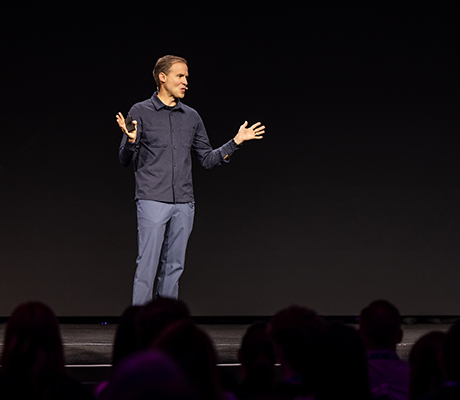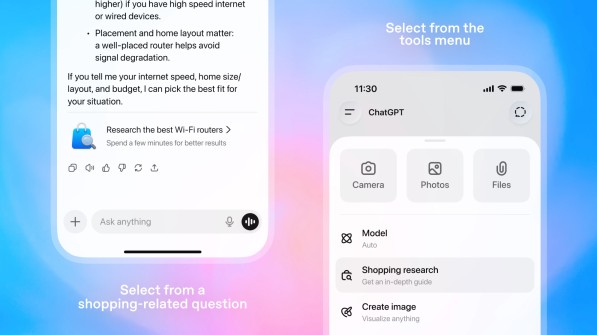Pattern's Tony Morales Discusses COVID-19 Ecommerce Trends With Kenshoo
What's going on with COVID-19 and ecommerce? Pattern's Director of Advertising, Tony Morales, sat down with Kenshoo to discuss what emerging trends he's seen.
The COVID-19 pandemic has dramatically shifted the ecommerce landscape, from the way consumers shop to the way brands advertise and sell. On Thursday, April 30, Kenshoo’s GM of ecommerce, Nich Weinheimer, sat down with Tony Morales, Director of Advertising at Pattern, during an Ask the Experts live event to discuss the latest ecommerce trends amid the coronavirus crisis and what they mean for marketplace sales.
Changes in category performance
According to Morales, brands in a few categories are doing unsurprisingly well right now. Cleaning supplies, sanitization products, and supplements, particularly immune supplements, are a few that are thriving. “It’s very hard to keep zinc in stock,” Morales said. “We have a number of different top of the line supplement brands that we work with, and any time we have something like zinc, we’re selling out in hours.”
Another thriving category that may come as a bit of surprise is beauty products. “We’re seeing lift in beauty products, especially high-end beauty, so anything that somebody would normally do at a salon, devices that allow somebody to do those same kind of beauty procedures at home, those are being sold very successfully now,” Morales said. While niche products within the apparel category, like running socks and athletic footwear, are doing well, wardrobe and apparel in general is struggling. Luggage and jewelry brands are also seeing dips in sales during COVID-19.
The biggest surprise
Morales said that in looking at ecommerce trends during the pandemic, the biggest surprise has been the volume of new customers making purchases. “There certainly are existing customers that are buying more, but what we’re seeing is that the majority of the demand is coming from new customers,” Morales said.
Weinheimer’s data confirms it—new customer numbers are twice as high as those in 2019. “As we looked at the average of last year . . . about maybe 5 to 6 percent of our index order volume was new-to-brand. We’re seeing sustained 13-14% new-to-brand across the index,” said Weinheimer.
Toys and games is one category that’s seen a massive new-to-brand order volume month over month between February and March—over 120%. One of the reasons for these surges is that customers who don’t typically shop online are having to do so because of brick-and-mortar closures, and customers who shop online occasionally are doing so more frequently. “For many product categories, we’re seeing these spikes in new-to-brand customers where maybe they’re not necessarily truly new-to-brand, because they’ve purchased it elsewhere, but they’re new-to-brand via online, which is exciting,” Morales said.
COVID-19’s current and future impact on ecommerce sales
Morales said there’s been a giant upward trend in ecommerce sales over the past several years—ecommerce in the United States was just shy of $4 trillion in sales last year, he said. By 2023, studies project $6.5 trillion worth of volume will be coming through ecommerce, and this is before taking COVID-19 trends into account. “We’re certainly seeing shopping patterns change and people doing more ecomm than they have in the past, and so my expectation is that the growth curve for ecomm that has sort of already been in place is going to accelerate because of this,” Morales said.
Pattern is seeing spikes in ecommerce sales at up to 53%, Morales said. Amazon itself has had to put restrictions on what it deems essential items for a limited time due to customer demand, which is greater now than during the holidays. According to Weinheimer, 17% of retailers are reporting that more than half of their business has been driven by ecommerce during COVID-19. That’s 10% more than were reporting similar figures at the same time in 2019.
What this means for brick-and-mortar brands
For businesses that are already online, current ecommerce numbers are a big win. Businesses that are traditionally brick-and-mortar, however, may see a need for much heavier investment in ecommerce and significant adjustments to online and shipping infrastructure. Shoppers will definitely make their way back into brick-and-mortar businesses, but how soon and in what capacity is anyone’s guess.
Many shoppers are experiencing some online markets—with curbside pickups for their online grocery order, for example—for the first time. It will be interesting to see how many people turn those experiences into habit.
How fulfillment and customer service can help brands get ahead
While ecommerce is a busy and challenging space, it’s also one with opportunities. One way Morales said brands are succeeding in the ecommerce space right now is by fulfilling purchases directly rather than having Amazon fulfill them, cutting down shipping windows. “It’s not the shipping that’s slow. It’s the processing in the Amazon fulfillment center,” Morales said, “So if you as a brand owner are able to handle that on your own, flipping to merchant fulfilled Prime could be a big win for you over the next month or so.”
Having fulfillment infrastructure like curbside pickup in place that makes the shopping experience more convenient and mindful of customers is also an opportunity for brands, especially with buyers already getting into the routine of seeking out those purchasing methods. Ultimately, having a great customer service experience is a big way brands can differentiate, Morales said, especially with most brands competing in speed, quality, and pricing.
What is the forecast for ecommerce sales?
Though brands are experiencing many challenges right now, Morales said they can be optimistic. “There are still plenty of opportunities in the marketplace,” he said. “Invest in digital. Invest in your teams. Invest in ecomm, because there is this wave coming, and the pandemic that we’re in has only accelerated that wave.” “I think that when this is done, when the dust settles, the future is going to be bright for everyone,” Morales added. Reach out to Pattern’s ecommerce experts through the form below, or learn more insights with our related content.


.jpg)







.jpg)